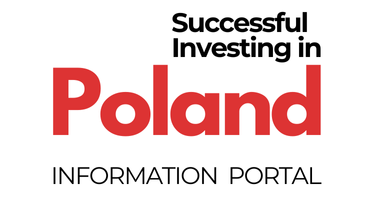On 7 November 2025, Poland’s rating according to S&P was reconfirmed at A-/A-2 for foreign currency liabilities and A/A-1 for domestic currency debt. The rating outlook remains stable, which in the current geopolitical and fiscal environment is an important signal of the predictability and resilience of the Polish economy. The agency’s decision is in line with the long-term image of Poland as a market with established credibility, attractive to foreign capital and resistant to external shocks.
The significance of Poland’s S&P rating for investors
The confirmed credit rating is a key parameter for assessing investment security. For foreign investors, it means:
- lower country risk,
- greater predictability of macroeconomic policy,
- a stronger position for Poland on global financial markets,
- more attractive conditions for investing in bonds, companies and infrastructure projects.
The stable outlook signals that, despite growing budgetary challenges, Poland retains solid economic fundamentals and a high level of structural resilience.
Poland’s current rating according to S&P – what does the agency emphasise?
In its announcement, S&P highlights several key factors:
1. Stable economic growth
- GDP growth is forecast at 3.3% in 2025 and 3.2% in 2026.
- Between 2025 and 2028, average growth is expected to be around 3%, which is well above the global median for countries with a similar rating.
2. Large and resilient economy
Poland stands out for its:
- diversification of sectors,
- large domestic market,
- strong service sector,
- and the growing role of advanced business services and technology.
The agency emphasises that the strength of services mitigates the uncertain outlook for industry, part of which remains export-oriented.
3. Less vulnerability to problems in the automotive industry than in other CEE countries
It was pointed out that the Polish economy is much less dependent on the automotive sector than the Czech Republic or Slovakia, which means that the impact of global customs changes or the slowdown in Germany is relatively milder.
4. Key role of EU funds
Funds from:
- the National Recovery Plan,
- the Multiannual Financial Framework,
- the SAFE instrument,
will be the main driver of public and private investment in Poland in the coming years.
Fiscal challenges – realistic, but taken into account in S&P’s rating assessment of Poland
Despite its positive assessment of the economy, the agency points to significant budgetary challenges:
- General government debt will increase from 48% of GDP in 2024 to around 67% of GDP in 2028.
- The deficit in 2025 is expected to reach almost 7% of GDP, falling to around 6.5% of GDP in 2026.
- The main factors contributing to the increase in debt are:
– high expenditure on army modernisation,
– financing of investments from EU funds,
– inventory fluctuations and cash flows related to military equipment purchases.
The government has already proposed mechanisms to increase budget revenues from 2026 onwards, which is intended to support the fiscal stabilisation process.
Potential directions for Poland’s rating change according to S&P
When is a rating upgrade possible?
S&P indicates several conditions that could lead to an improvement in the rating:
- A significant reduction in the deficit, leading to a slowdown in debt growth.
- Strengthening of the institutional framework and governance, increasing predictability and political stability.
- Maintaining a high inflow of EU funds, as well as a stable inflow of foreign direct investment.
These are real signals for long-term investors – Poland’s rating may improve in the future.
What could lower the rating?
The rating risk could increase in the event of:
- a marked deterioration in the economic growth outlook,
- growing macroeconomic imbalances,
- renewed external shocks, including the consequences of Russia’s war against Ukraine,
- an escalation of the conflict that could affect Poland’s security or generate above-average defence spending.
However, S&P emphasises that the direct impact of hybrid threats on the Polish economy has so far been limited.
Why does Poland remain attractive to foreign investors?
1. Strong domestic market
Poland is one of the largest markets in the EU, which means stable demand and less dependence on exports.
2. Dynamically growing services, technology and BPO/SSC sector
Poland is a European leader in attracting shared service centres, technology companies and start-ups.
3. Access to skilled personnel
Engineering and technology personnel are among the best rated in Europe, which, combined with lower labour costs, makes Poland exceptionally competitive.
4. Security and predictability
Membership in the EU and NATO, as well as a consistent economic and institutional course, strengthen the country’s credibility.
5. Intensive infrastructure and military investment
This creates additional investment opportunities in:
- energy,
- logistics,
- cybersecurity,
- defence technologies,
- transport infrastructure.
S&P’s rating for Poland confirms the country’s stable and resilient economic position
On 7 November 2025, S&P confirmed that Poland remains an economy with strong fundamentals and a stable growth outlook. Despite fiscal challenges and a complex geopolitical situation, the country maintains a high level of creditworthiness and attracts significant foreign capital.
S&P’s rating of Poland sends a clear signal to investors: Poland remains one of the most competitive and stable investment markets in Central Europe, offering long-term growth potential and broad opportunities for capital investment.





